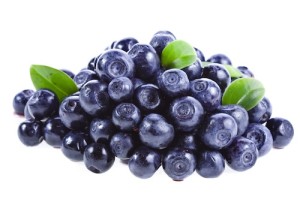Argentina: Blueberry a leader among fine fruits
Even though Argentina’s blueberry production is relatively new, as it is only 30 years old, the planted area increased six times in the last decade: it went from 400 hectares to 2,600 hectares. In 2014 blueberry production reached a record as exports amounted to 16,000 tons and there were revenues for US $110 million.
According to the Blueberry Producers Association of Mesopotamia Argentina (Apama), the 2014 season ended with a total of 16,500 tons of blueberries, i.e. nearly 30 percent more than in the previous season, worth $110 million.
According to Gonzalo Carlazara, technical advisor at Apama, this campaign was characterized by “the good quality fruit we could offer, helping us to position ourselves as a leader in the supply of fine fruit products in the southern hemisphere.”
The report by Apama stated that, “the volume exported by Argentina between August and October amounted to 10,665 tons, i.e. 80 percent of the blueberry exports of all the suppliers in South America in that time frame.”
“Apart from exporting to the usual destinations, such as USA, Canada, UK, Europe and some countries in Asia, last year we were able to incorporate destinations that were unusual for this fruit, such as Russia and the UAE,” said Carlazara who added that they were working on protocols that would enable them to export fresh fruit to China, Japan and Korea.
The NEA region (Entre Rios, Corrientes, and Misiones) leads exports with an output of 7,700 tons, followed by the NOA region (Tucumán) with 5,700 tons, and Buenos Aires with 1,700.
Apama technicians, along with the Inta Concordia have been conducting performance evaluations by testing fertilization, pollination tests, the behaviour of different varieties adapted to the region, and postharvest fruit firmness and acidity, among others.
Genetics
“Every year we evaluate three new varieties and we check the traditional varieties,” said Carlazara, who added: “The evaluations helped us to conduct varietal replacement. For example, the O’Neil variety was slowly replaced giving way to other younger and more productive varieties, such as the Snowchaser and Emerald varieties, which are currently the most planted varieties in the NEA”.
María Fernanda Rivadeneira, an ecophysiology fruit specialist at Inta Concordia, Entre Ríos, stated that even though the blueberry production in the country was new, the planted area had increased by six times so it had ceased to be an alternative production and was now consolidated in the region.
In line with this strong growth, Rivadeneira said, “the demand for blueberries, worldwide, will increase, especially in countries with high purchasing power. There is a growing trend in consumption patterns towards natural products with beneficial health components, including this fruit.”
Referring to the domestic market, Rivadeneira said that consumption in Argentina was virtually non-existent and underdeveloped, so the production and export figures were virtually identical.
The entire amount of blueberries produced in Argentina are frozen, exported and processed in its destination point. “For the past three years, we at Concordia have been working on the processing of blueberries to make jellies, candies, jams, juice, liquor and wine, on a commercial scale,” said Carlazara.
The opening of the sector towards industrialization generates high expectations for the regional economy and open new markets. “A group of businessmen has expressed interest in exporting dried fruit to China,” he said.
Development
Inta is working on various projects related to research and technology transfer in this crop to accompany the development of this agricultural activity, such as controlled atmosphere storage that allows delaying the ripening process and management techniques for the early harvest to preserve the fruits quality attributes and postharvest life. In addition, the agency has a collection of berries in the Germplasm Bank and performs evaluation of new varieties. They also perform studies about pollinating crops aimed at nutritional diagnosis, high density handling and fertigation.
Berries
Features: Berries are kind of bluish, have high amounts of antioxidants and are known for being rich sources of minerals and vitamins.
Areas of production: The main production areas are in Buenos Aires, Entre Rios and Tucumán, which concentrate over 90 percent of the blueberry crops in the country. There are also some plantations in Córdoba, Salta, San Luis, Santa Fe, Rio Negro and Chubut.
Buyer Markets: US, Canada, UK, Europe and some Asian countries, such as Russia and the UAE.
Potential customers: The country is in negotiations to export the fruit to China, Japan and Korea.
4/13/2015
Fresh Plaza / La Voz






